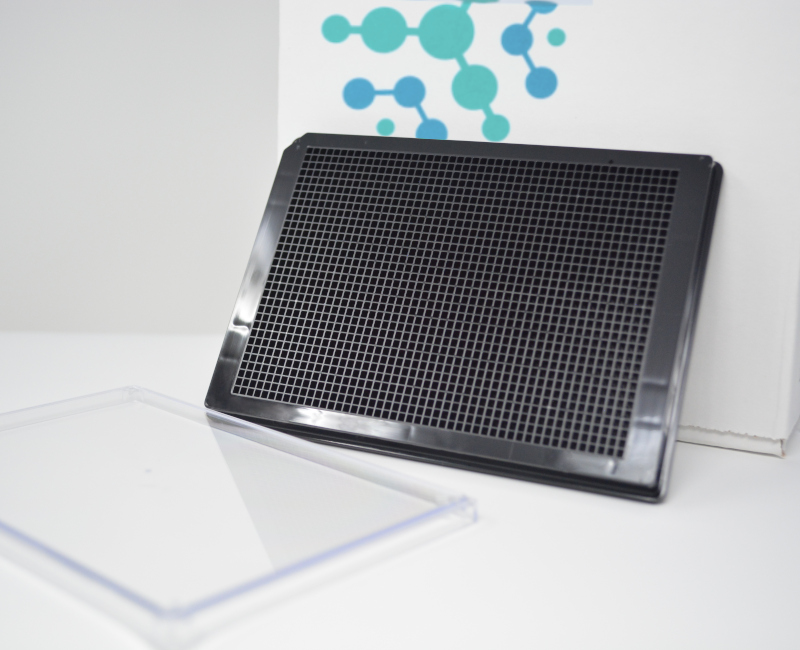
Spheroid Culture System: Advantages, and Mechanism
Spheroid culture system is a revolutionary 3D cell culture system that is relatively low tech, easy to use and easily reproducible. Spheroid system aids the formation of in-vivo like cell structure, where cells maintain their native phenotype, and extra-cellular matrix (ECM) interactions (1-2).
Advantages
– Spheroid culture encourages the in-vivo like expression of transcription factors e.g. stem cells.
– Exhibits higher levels of protein expression and other mediators that affects the proliferations, viability and migration of cells compared to traditional monolayer cultures
– Spheroid tumor cells exhibit remarkable resemblance to native cell structure, which in turn yields translatable data for high throughput drug screens.
Disadvantages
Spheroid cell culture systems tend to consists of a diffusion gradient, as the size and shape of spheroids increases. This can cause a lack of nutrients at the core of the spheroid consequently affecting cell viability. Bigger the spheroid, the lesser amount of nutrients that can get to the core of the spheroid (1-2).
Mechanisms of spheroid formation
In a normal cell culture suspension, cells aggregate and begins the process of self assembly, which means single cells begins to form multicellular spheroids. This is a normal physiological phenomenon commonly occurring during embryogenesis, morphogenesis and organogenesis. Self assembly is affected by various factors which includes: gradient of nutrients, oxygen, and growth factors present in culture medium, cellular paracrine factors, Increasing size of spheroids during culture, rate of production and consumption of factors that are necessary for adhesion and differentiation of cells that impact multi cellular spheroid formations. E.g the levels of integrins and cadherins produced that aid in adhesion (3-9).

Mechanics of Spheroid formation
1. Individual cells in a cell suspension aggregate to form a loose spheroid. This process is facillated by ECM fibers and complementary binding of cell surface integrins (3-9).
2. Strong adhesion is then mediated by E-cadherins, via homophillic binding between cadherins of peripheral cells. Actin molecules also cements the contacts between adjacent cells, resulting in the formation of strong adhesive multicellular spheroid is formed (3-9).
References
1. Zhang, Q.; Nguyen, A.L.; Shi, S.; Hill, C.; Wilder-Smith, P.; Krasieva, T.B.; Le, A.D. Three-dimensional spheroid culture of human gingiva-derived mesenchymal stem cells enhances mitigation of chemotherapy-induced oral mucositis. Stem Cells Dev. 2012, 21, 937–947.
2. Cheng, N.C.; Chen, S.Y.; Li, J.R.; Young, T.H. Short-term spheroid formation enhances the regenerative capacity of adipose-derived stem cells by promoting stemness, angiogenesis, and chemotaxis. Stem Cells Transl. Med. 2013, 2, 584–594. [CrossRef] [PubMed]
3. Achilli, T.M.; Meyer, J.; Morgan, J.R. Advances in the formation, use and understanding of multi-cellular spheroids. Expert Opin. Biol. Ther. 2012, 12, 1347–1360
4. Tsai, A.C.; Liu, Y.; Yuan, X.; Ma, T. Compaction, fusion, and functional activation of three-dimensional human mesenchymal stem cell aggregate. Tissue Eng. Part A 2015, 21, 1705–1719.
5. Lin, R.Z.; Chou, L.F.; Chien, C.C.; Chang, H.Y. Dynamic analysis of hepatoma spheroid formation: Roles of E-cadherin and beta1-integrin. Cell Tissue Res. 2006, 324, 411–422.
6. Batlle, E.; Sancho, E.; Francí, C.; Domínguez, D.; Monfar, M.; Baulida, J.; García de Herreros, A. The transcription factor Snail is a repressor of E-cadherin gene expression in epithelial tumour cells. Nat. Cell Biol. 2000, 2, 84–89.
7. Comijn, J.; Berx, G.; Vermassen, P.; Verschueren, K.; van Grunsven, L.; Bruyneel, E.; Mareel, M.; Huylebroeck, D.; van Roy, F. The two-handed E box binding zinc finger protein SIP1 downregulates E-cadherin and induces invasion. Mol. Cell 2001, 7, 1267–1278.
8. Konze, S.A.; van Diepen, L.; Schroder, A.; Olmer, R.; Moller, H.; Pich, A.; Weissmann, R.; Kuss, A.W.; Zweigerdt, R.; Buettner, F.F. Cleavage of E-cadherin and beta-catenin by calpain affects Wnt signaling and spheroid formation in suspension cultures of human pluripotent stem cells. Mol. Cell Proteomics 2014, 13, 990–1007.
9. Dang, S.M.; Gerecht-Nir, S.; Chen, J.; Itskovitz-Eldor, J.; Zandstra, P.W. Controlled, scalable embryonic stem cell differentiation culture. Stem Cells 2004, 22, 275–282.


